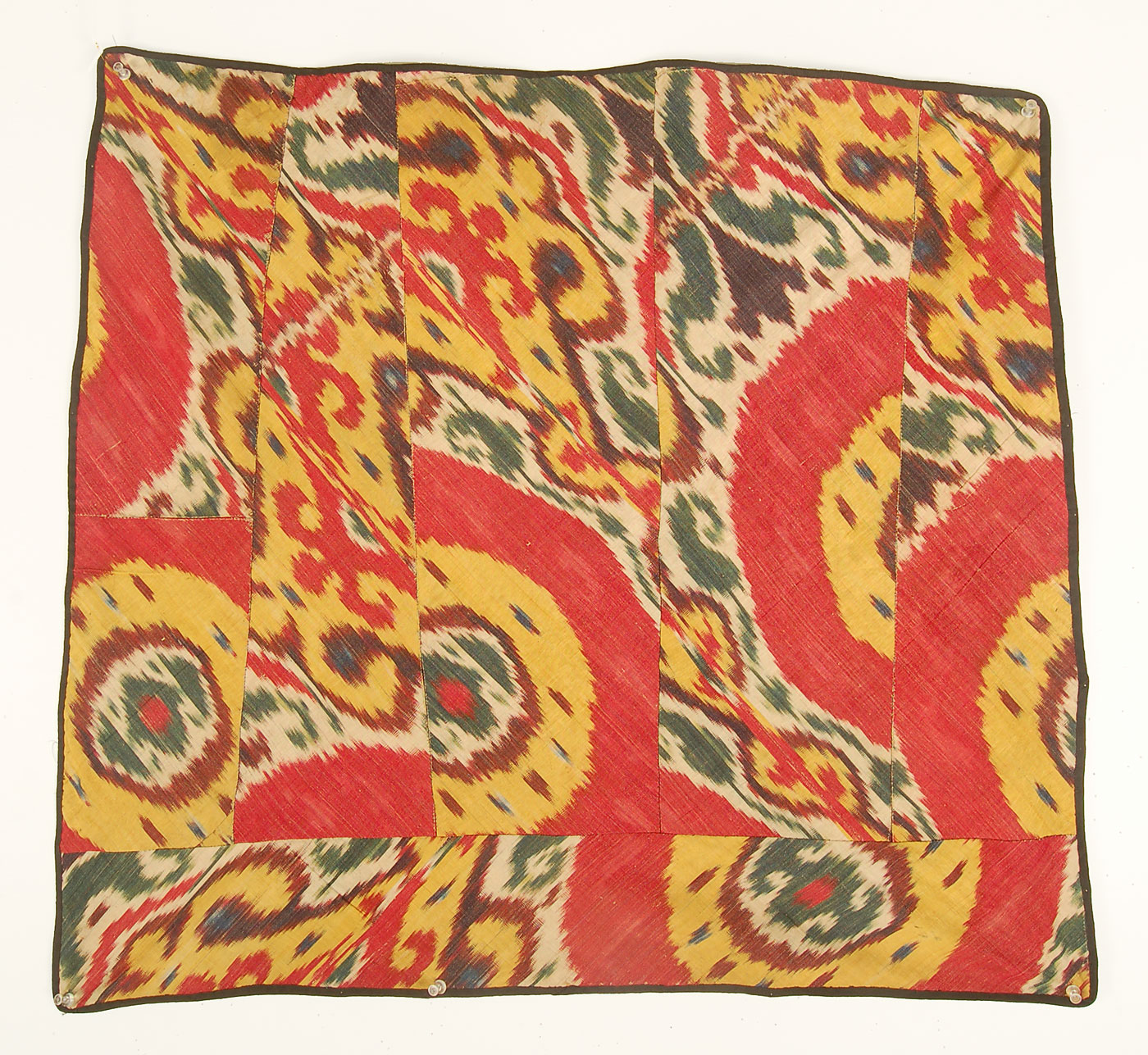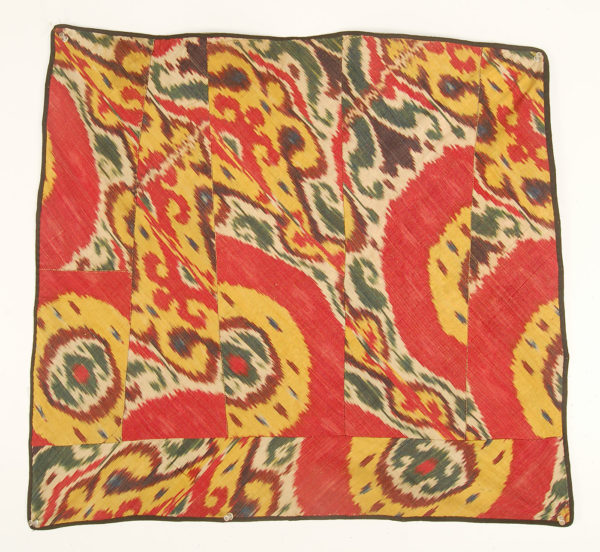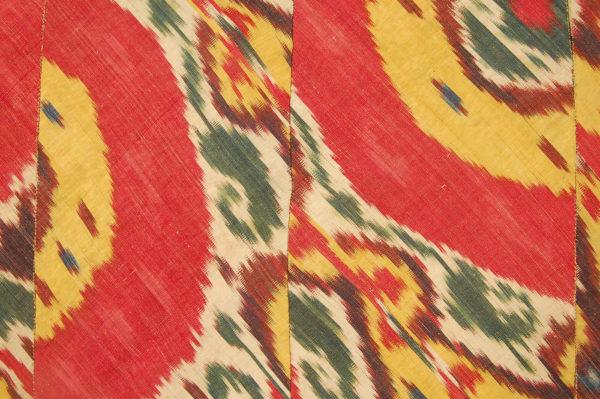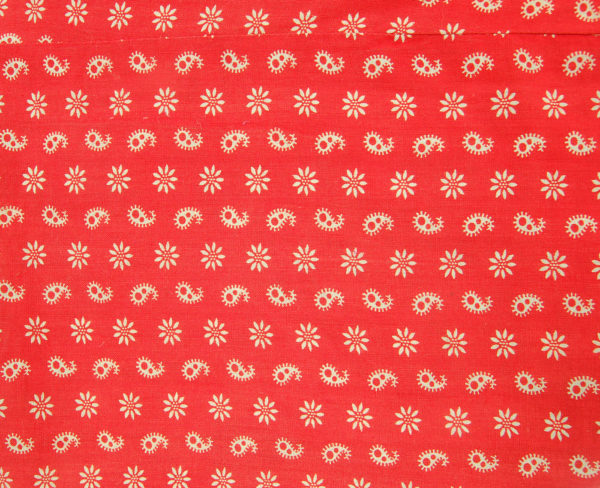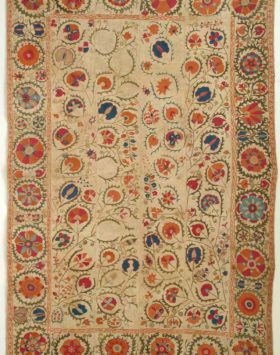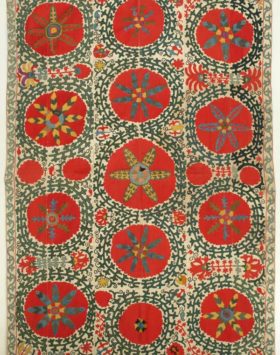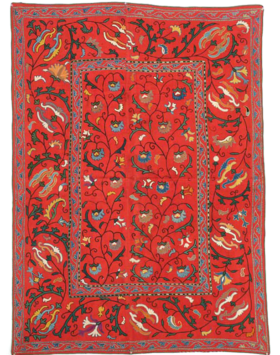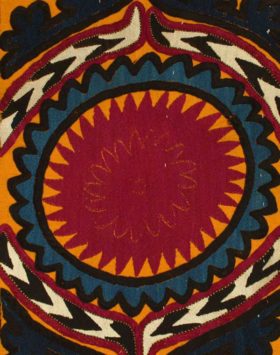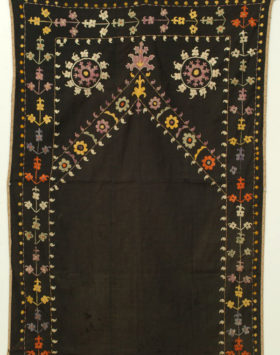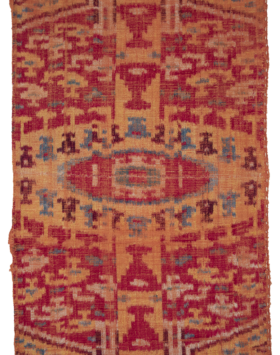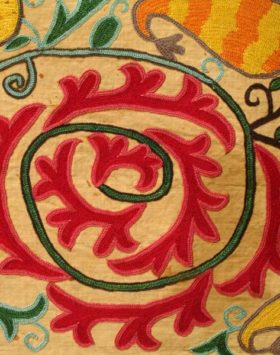Uzbekistan Small Pieced Ikat
This small pieced ikat was made in the 19th century in what is current-day Uzbekistan. The design is composed of four colors, which would have been layered through the complicated tie-dying process that is widely called by its Malay-Indonesian name, ikat, though it would have been called abr cloth in this Central Asian context. The backing is a block-printed cotton, likely imported from Russia.
Central Asian ikat originated in the 19th century, most likely in Bukhara, a bustling cosmopolitan city that would have had the requisite concentration of craftspeople necessary to support such a technically demanding process. Ikat is a difficult technique because the design is tie-dyed onto the fibers before the textile is woven, which requires great skill from the dyers, warpers, and weavers involved.
One might expect that such a difficult process would have led designers to create and conform to regular patterns to ensure they could achieve a consistent final product, but it seems that just the opposite occurred. Weavers and designers embraced the mutability of the process, experimenting and innovating with each textile they created, so no two ikats turned out quite the same. Many ikats have vertical symmetry due to the dyeing process, but just as often the weavers purposefully mismatched sections to create more visual interest.
Circa: 19th century
Origin: Uzbekistan
Material:
Condition:
Dimensions:
Inventory number: TX4550
POR
Call: (646) 370-6801
E-mail us: yosi@sarajo.com
